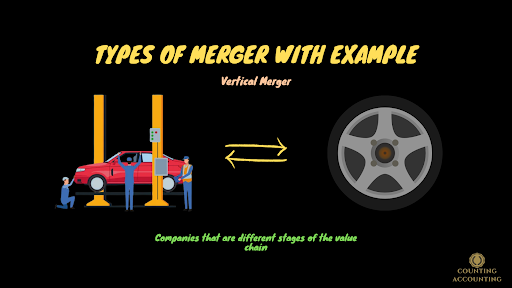Here we're gonna discuss three types of mergers,
- Horizontal Mergers
- Vertical Mergers
- Conglomerate Mergers
Horizontal Mergers: A horizontal merger is when two competing companies combined with each other. An example would be in 2013 when Office Depot and OfficeMax which are both office supply retail stores;. They combined with one another and the combined entity was known as Office Depot going forward.
Now in horizontal mergers, because you're having competitors combining you're reducing the amount of competition. So sometimes that can be blocked by the courts, for example, in 2016 this combined company here which is Office Depot went to merge with the company Staples which is the third company but a judge blocked that and said "No, that's gonna reduce competition by too much, it's gonna be anti-competitive, so we're not gonna allow that". So that merger was blocked.
Vertical Merger: Now we don't have competitors combining, what we have is companies that are at different stages of the value chain, for example, let's say that you had a company that made cars and trucks, and they were to merge with a company that makes tires. Tires are used in cars and trucks obviously. So we have companies that previously had a buyer-seller relationship and now they have merged together. That's a vertical merger. Another specific example would be in 2018 we had CVS which is a chain of pharmacy clinics, this pharmacy store acquired Aetna which is an insurance company. So we had companies at different stages in the value chain combining together.
Conglomerate Merger: You won't hear as much about conglomerate mergers anymore, you hear about it like in the 1980s with the company General Electric they were a large conglomerate. Another large conglomerate is Samsung. Conglomerate mergers happen when you have companies combining but there's not really any specific relationship between them, they're not competitors, they're not providing services at different stages of the value chain, there might be no relationship really between what the two companies do at all.
An example would let us take the company Walmart and let's say Walmart was to merge with a company that provides therapy to dogs. Clearly, there is no relationship between Walmart's retail operations and pet therapy. So if these two companies were to combine we would call that a conglomerate merger.




